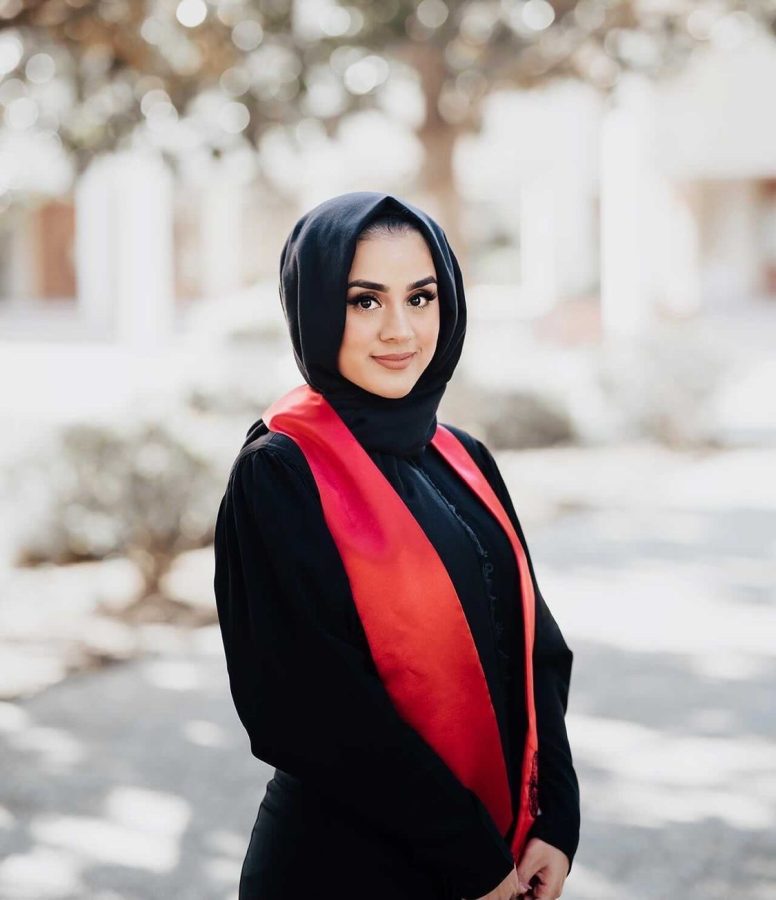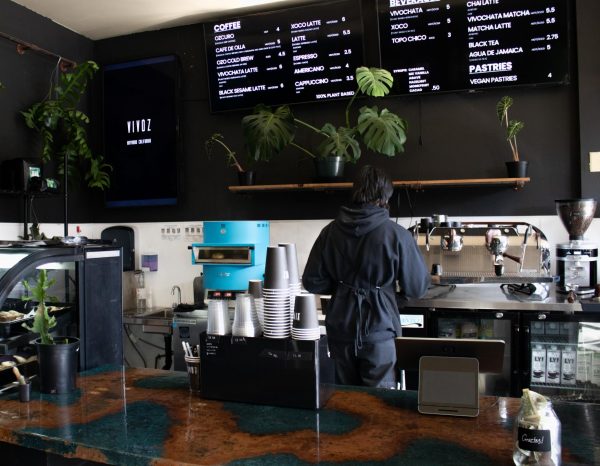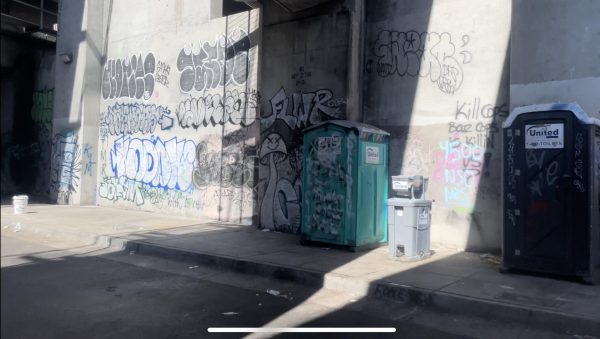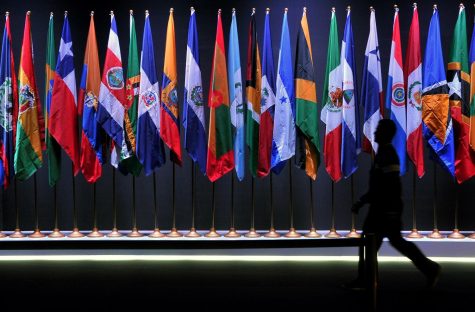I Can’t Take It Off
October 21, 2021
An exploration of identity, choice, and the power of Islamophobia.
How does a hijab change someone’s identity? “Who am I? When I made the choice to put it on in the beginning, it was a huge difference. And at that moment, I thought once I start wearing this I can’t take it off,” described Haniya Durani, a senior at Cal State University, East Bay and Vice President of the Muslim Students Association, on how the hijab changed her identity.
Durani’s choice to wear the hijab every day was a journey. While she initially described the finality with which she made the decision, the reality is much more nuanced as she explained. “I wore it for like two months. And I took it off. I just wasn’t ready.”
Her first foray into wearing the hijab came back when she was living in South Asia where the practice has deep socio-economic and cultural underpinnings. “I’m from Pakistan, the British ruled over the region for a very long time. In [Pakistanis’] head [they] think that being westernized, not wearing the hijab, just being super British in our lifestyle means that you have more power in the community.”
While these distinctions are often cast aside in news reports and the Muslim world is presented as a monolith, the reality on the ground is that the rules and norms surrounding the hijab vary enormously depending on the country, religious sect, and cultural groupings.
Sweeping proclamations on the hijab are often short-sighted and fail to understand its significance. In Durani’s native Pakistan for example, it is often associated with lower socioeconomic status and is shunned by many of the more western-facing communities of the country. These types of pressure impact the choices of many women and partly explain why Durani didn’t wear the hijab until she moved to the United States.
The politicization of the hijab is a 20th-century phenomenon tied to colonization and the spread of secularism. “The hijab became used as a symbol of identity, during the early part of the 20th century. To be modern and progressive you have to take the hijab off. This was possibly reflecting and borrowing some of the European developments in relation to women’s clothing at the time,” explained Dr. Hatem Bazian, a lecturer at the University of California, Berkeley, and researcher at the Institute for Policy & Social Understanding.
He continued to explain that the trend found support at a state level and made waves in countries traditionally thought of as Muslim, “it was actually instituted by the government, that you should take off the hijab in Turkey, then followed by Iran and then Egypt as a sign for entering into the modern world.”
However, the arc of history fluctuates, and over the last half-century European countries like France, with a significant Muslim population or theocracies like Iran, the discussion found a new thrust in the form of laws seeking to limit women’s right to choose one way or another. Moreover, the laws themselves fit in a broader context, while limiting women’s choices they’re also clearly central to efforts to craft an identity for nations.
Laws opposing the hijab serve to define a sort of “other” or boogeyman as explained by Bazian “I would actually assert that France is searching for an enemy in order to define itself.” He continues by outlining the significant questions that France faces like the state of social welfare programs, and the yellow jacket protests. “All this gets to be almost sidetracked, now you have the problem in French society is ‘the Muslim woman in hijab is disrupting our sense of Laïcité.*’ Rather than the state, as a result of neoliberal economics, is undergoing a whole transformation and that the responsibility relationship between the government and the citizen has completely shifted over the past 15-20 years,” noted Bazian.
The idea that political factions and governments create enemies, or problems, in order to deflect, is not a new one. Many would point to the United States and former President Donald Trump’s calls to build a wall to keep “criminals, drug dealers, and rapists” out as a recent example.
Amine Gharbi, a longtime Paris resident and Moroccan Marketing Executive agreed to cite the upcoming French election as the reason for this latest push from the French center-right on the question of the hijab, “There are very clearly certain news channels that start pushing in that direction especially during election periods.”
He explained why from his perspective “These guys, like Eric Zemmour, mainly talk about [the hijab] to say that we’re in a cultural war, but it’s really because manufactured hate can create political currents. For them, it’s a business.”
Sadly, the ill effects of these laws go beyond the political theater. “Unfortunately in French society, we make a big deal out of it,” added Rizlaine Anous El Aloui, a Parisian and business lawyer. “Certain people think that [Muslim women] are oppressed or forced in some way to wear it and that they can be their savior. The reality is that most people in France that wear it do it by religious conviction or tradition. Or simply because they want to.” The lasting impacts of “white savior” attitudes, impact girls and women in France. Those who wear the hijab often experience worse outcomes in school and the workplace because of hijab laws.
On the flip side, theocracies with laws dictating mandatory head coverings are also in crisis as women push back on the dictates around their choices and freedom of expression. Iran for example, like previously mentioned, underwent a shift towards reducing the hijab; that is of course until its seismic reversal on the issue.
With the Iranian revolution of 1979, Ayatollah Khomeini introduced the hijab as a mandate for religious reasons but also largely as a sign of anti-imperialism.
It almost immediately resulted in pushback from many women in Iran who had come to choose not to wear it. That struggle continues today with many women discreetly pushing back on the law by donning the hijab in a loose fashion with their hair showing, or in more overt ways like campaigns and outright protests where they refuse to wear it.
While being aware of this broader context, for Durani the decision was more personal in nature and she doesn’t ascribe it specifically to any political values: “I’m not gonna say I was a super religious person, because I wasn’t. I didn’t wear the hijab growing up.”
Instead, Durani linked her decision to wear the hijab with other reasons. “I wanted to discover my religion, and I feel like [Muslims] at some point, they’re kind of curious.”
She slowly discovered her faith and found a community where she made the decision. “The reason why I started wearing it was because I also found a community here. I was like, okay, let me try it out. Let me see how it looks. And now, I just feel protected.”
“I can’t take it off” is clickbait to draw you in by creating cognitive dissonance between stereotyped notions of Muslim womens’ right to choose with the lived experiences of strong women who are pillars of California State University, East Bay’s community. The reality though is that approach plays right into what I sought to criticize, women who wear the hijab aren’t pawns.
The politicization of the hijab one way or another is destructive to the causes of Muslim women. In the process of creating this story, I realized that our societal focus on the hijab can be detrimental to our need to focus on the overarching importance of emancipation and autonomy for women. It is THEIR body and their choice whether to wear it or not, not anyone else’s.
Dr. Farid Senzai, associate professor at Santa Clara University, perhaps best summarized the importance of nuance and understanding when asked what the hijab really means: “That’s the thing, it is not a simple answer. It’s a very complicated answer. In some ways, many women have gotten really frustrated with the fact that this question keeps coming up.”
He continued to describe the reaction from some of his students when the question arose, “They say look, we need to move beyond the hijab. It’s time to talk about so many other things that Muslim women are concerned about and care about. Why are we constantly identified based on whether we wear it or don’t wear it?”
*Laïcité means separation of church and state, freedom of religion, the right to express one’s faith while respecting public order and institutions. Laïcité is a concept born out of the French Revolution.
















